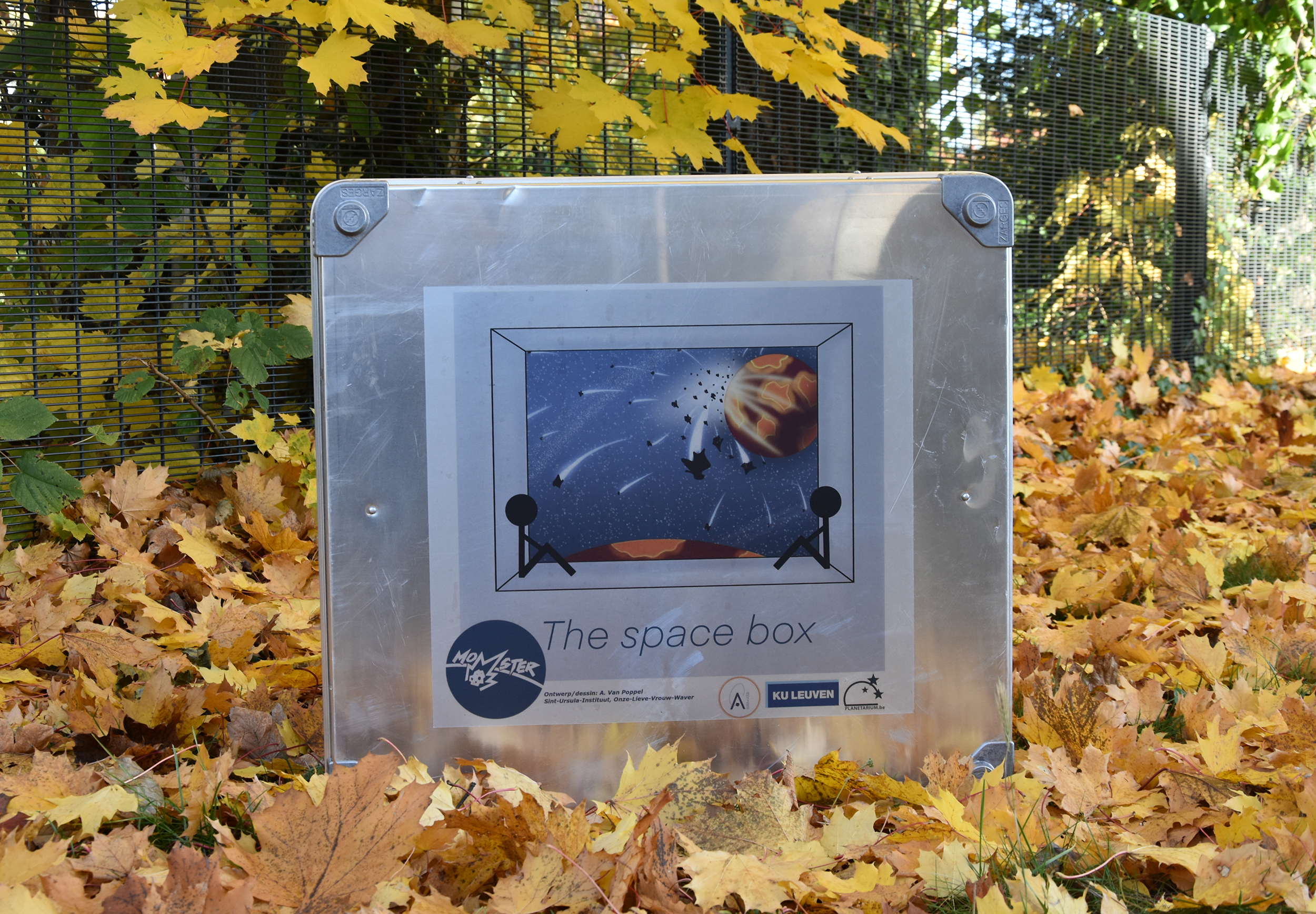MOMSTER, a Mobile Meteor Detection Station for Education and Outreach
Karolien Lefever, Stijn Calders and Hervé Lamy (BIRA-IASB) describe how schools are becoming involved in meteor research.
Read article in the fully formatted PDF of the Europlanet Magazine.
Every day, about 100 tonnes of rubble or dust from space enters the Earth’s atmosphere. Most meteors are too small to be seen from the ground as shooting stars, yet they can be traced through radio techniques – even in cloudy skies and during the day!
In the lower ionosphere, an atmospheric layer about 80-120 kilometres above the Earth’s surface, the rocky or metallic fragments heat up, burn and collide with molecules and atoms, releasing one or more electrons. The resulting ‘ionisation’ trail along the meteor’s path can, under certain geometrical conditions, reflect radio signals and be used for meteor tracking. A meteor detected in this way is called a radio meteor or meteor echo.

Scientists at the Royal Belgian Institute for Space Aeronomy (BIRA-IASB) have been using this technique to study meteors since 2010 using the Belgian RAdio Meteor Stations (BRAMS) network. BRAMS consists of about 40 radio receivers placed at the homes of participating amateur astronomers, radio amateurs, schools, universities and public observatories/science centres spread throughout Belgium and just beyond its borders. A single radio transmitter, located in Dourbes in southwest Belgium, continuously sends radio waves with a fixed frequency (49.97 MHz) vertically skywards. Radio signals reflected by the ionisation trails of meteors are received by one or more receivers tuned to the BRAMS frequency, with thousands of meteor echoes registered every day.
The BRAMS data are usually displayed as visual representations of frequency, called spectrograms. Most of the meteor echoes appear as vertical lines and correspond to small particles, which form the bulk of meteors detected by the BRAMS network. However, some bigger and rarer objects create more complex shapes in the spectrograms, known as ‘overdense’ meteor echoes.

Automatic detection algorithms struggle to detect the overdense radio meteor echoes correctly, especially during meteor showers, and the human eye remains the best detector. Thus, in collaboration with Zooniverse, the BRAMS team started a citizen science project in 2016 called Radio Meteor Zoo.
After an initial introduction and a small amount of training, volunteers are invited to draw boxes in the spectrograms around signals they identify as meteor echoes and/ or overdense echoes. With this information, researchers can study the characteristics and the time-evolution of meteor showers’ activity, as well as obtain different properties of meteoroids (the fragments that caused meteors) like their mass, speed and trajectory.
As part of the EU-funded Erasmus+ project, BRITEC4 (Bringing Research Into ThE Classroom) BIRA-IASB researchers visited a number of secondary schools and introduced pupils to Radio Meteor Zoo, the wonderful world of the Solar System, and the origins of meteors. The project proved a hit! Pupils responded positively to the direct contact with the researchers and to the contribution they could themselves make to science. An idea started to grow to permanently embed Radio Meteor Zoo in an educational context and allow pupils to make their own radio meteor observations supported by an ‘educational buffet’ for teachers to bring the theme of meteors and radio astronomy in the classroom. The MOMSTER (MObile Meteor STation for Education & outReach) project was born!
A year later, with funding from Europlanet, three MOMSTER boxes were developed. Each kit includes a mobile, easy-to-use radio meteor station consisting of a short dipole antenna and a receiving box, as well as a computer programmed to visualise the stream of data recorded by the system. The accompanying educational package contains material about meteors, their importance and their impact on the atmosphere and the planet as a whole, linked to all STEAM (Science, Technology, Engineering, Arts, Mathematics) related subjects and targeted at students aged 16-18.
In a pilot phase, three Belgian schools (two Dutch speaking and one French speaking) tested the MOMSTER kits and gave their feedback. The educational resources will continue to grow in response to teachers’ experiences in the classroom.
Schools can adopt a MOMSTER kit for a few weeks, to receive and interpret meteor data in their own school and demonstrate the radio technology to their students. After a quick and easy set-up, they can detect meteor echoes within a few minutes, making it immediately rewarding for the students involved in the project. This way, students not only learn about dust in our Solar System, but also about the technology behind the science.


The MOMSTER project kicked off with the organisation of an art and design competition for high school students, and received more than 30 submissions. The competition was won by two 14-year-old pupils. The boxes now travel from school to school, decorated by the winning artwork, and accompanied by a roll-up banner with a winning infographic that explains the difference between meteoroids, meteors and meteorites.
As a subject that triggers the imagination, the study of meteors clearly has the potential to raise interest in STEAM disciplines and increase science engagement by linking with art and citizen science. Indeed, using STEAM education broadens our target group towards less scientifically oriented students. As such, we hope to inspire many more pupils and their teachers and convey a fascination for the ephemeral beauty and complexity of these natural light-shows.
MOMSTER was supported by the 2020 round of the Europlanet Public Engagement Funding Scheme. The Call for the 2022 round is now open.


